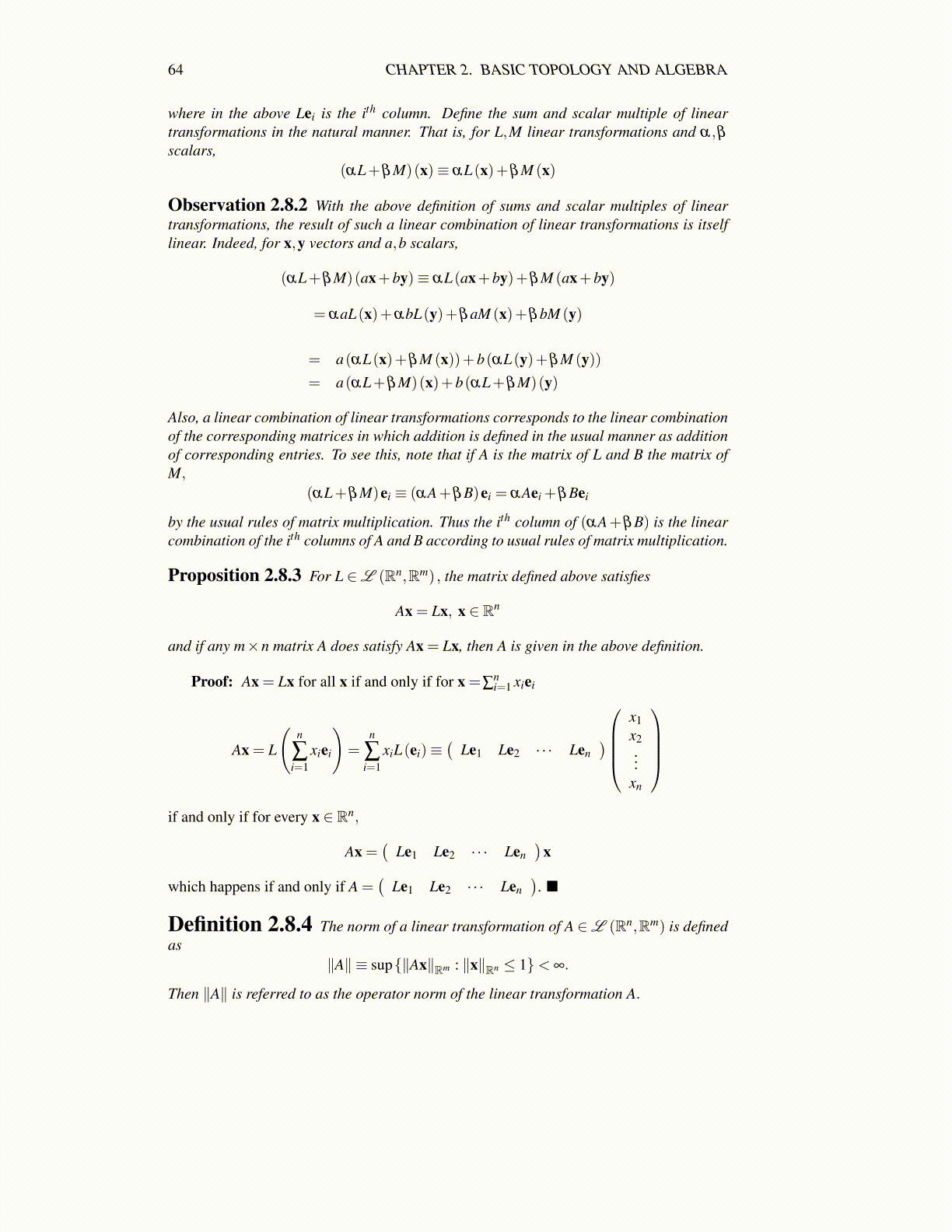
64 CHAPTER 2. BASIC TOPOLOGY AND ALGEBRA
where in the above Lei is the ith column. Define the sum and scalar multiple of lineartransformations in the natural manner. That is, for L,M linear transformations and α,βscalars,
(αL+βM)(x)≡ αL(x)+βM (x)
Observation 2.8.2 With the above definition of sums and scalar multiples of lineartransformations, the result of such a linear combination of linear transformations is itselflinear. Indeed, for x,y vectors and a,b scalars,
(αL+βM)(ax+by)≡ αL(ax+by)+βM (ax+by)
= αaL(x)+αbL(y)+βaM (x)+βbM (y)
= a(αL(x)+βM (x))+b(αL(y)+βM (y))= a(αL+βM)(x)+b(αL+βM)(y)
Also, a linear combination of linear transformations corresponds to the linear combinationof the corresponding matrices in which addition is defined in the usual manner as additionof corresponding entries. To see this, note that if A is the matrix of L and B the matrix ofM,
(αL+βM)ei ≡ (αA+βB)ei = αAei +βBei
by the usual rules of matrix multiplication. Thus the ith column of (αA+βB) is the linearcombination of the ith columns of A and B according to usual rules of matrix multiplication.
Proposition 2.8.3 For L ∈L (Rn,Rm) , the matrix defined above satisfies
Ax = Lx, x ∈ Rn
and if any m×n matrix A does satisfy Ax = Lx, then A is given in the above definition.
Proof: Ax = Lx for all x if and only if for x =∑ni=1 xiei
Ax = L
(n
∑i=1
xiei
)=
n
∑i=1
xiL(ei)≡(
Le1 Le2 · · · Len)
x1x2...
xn
if and only if for every x ∈ Rn,
Ax =(
Le1 Le2 · · · Len)
x
which happens if and only if A =(
Le1 Le2 · · · Len). ■
Definition 2.8.4 The norm of a linear transformation of A ∈L (Rn,Rm) is definedas
∥A∥ ≡ sup{∥Ax∥Rm : ∥x∥Rn ≤ 1}< ∞.
Then ∥A∥ is referred to as the operator norm of the linear transformation A.